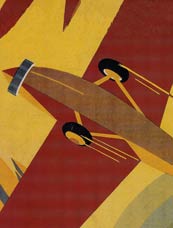|
NC21M appears in the Davis-Monthan Register on May 24, 1931.
It was flown solo by Gladys
O'Donnell, accomplished Golden
Age air racer. Based at Long
Beach, CA she was southbound
from Phoenix, AZ to Douglas, AZ.
Waco NC21M
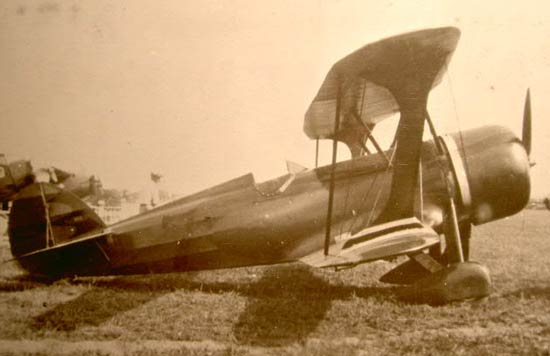 |
Her airplane carried S/N A-151. It was manufactured in 1929.
Pilot O'Donnell was a Charter member of the 99's and she was
a participant in the August, 1929 National Air Races (NAR) Powder Puff Derby. She
won second place in the Santa Monica, CA to Cleveland cross-country
race with a time of 21:21:43. According to the Aircraft Yearbook for 1930 (REFERENCES) she won $1,950 for her effort. She did not fly this airplane, however (see below).
Waco NC21M
(Source: Heins)
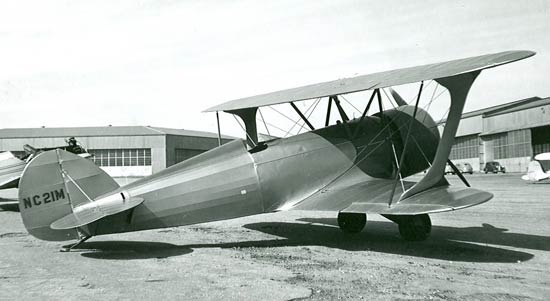 |
From the look of the cars in the background, the image
above was probably taken sometime later in the
1930s or 40s.
Waco NC21M
(Source: Heins)
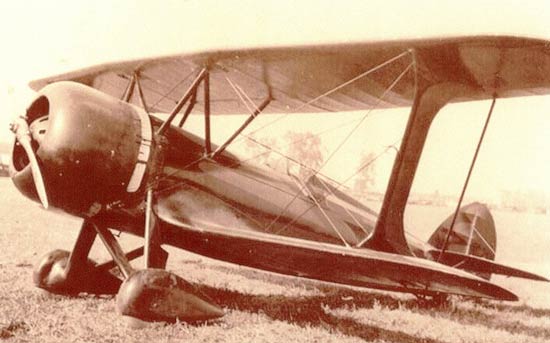 |
Where is NC21M today? The following article from the WACO WORLD
NEWS MARCH/APRIL 2000, p.
4 tells about its manufacture, special features,
race history and current location and fate.
DIARIES OF A TAPERWING
By
Rob Lock
Gladys O'Donnell
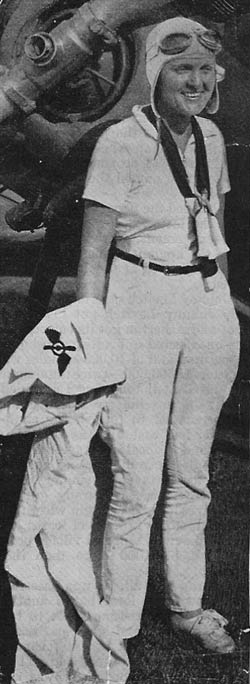 |
"In 1929, the first "Powder Puff
Derby" was
held starting in Santa Monica, Ca. and ended at the National
Air Races in Cleveland. Notable pilots that competed that
first year were Louise Thaden in a souped up Travel Air Speedwing,
Amelia Earhart in her red Lockheed Vega, and Gladys O'Donnell
in a J-5 powered Taperwing. Ms. O'Donnell finished second
that year in the borrowed Waco (NC9558) and vowed to be back
the next year and do even better.
"Lloyd [see the link to NC1082] and
Gladys O'Donnell took delivery of NC2lM; a Wright J6-7powered
Waco Taperwing on September 27th, of 1929. They knew some
modifications had to be done to compete with the faster production
airplanes then available. During the early part of 1930,
they had the airplane modified for racing with the installation
of I-struts, and a full NACA engine cowl that was made popular
by the Travel Air Mystery Ship the year before. They also
rounded the fuselage to fair into the large cowling and finished
the airplane in an attractive scalloped red and yellow paint
design. All this work finished the day before the 1930 Women's
Air Derby and was approved by the CAA and Waco factory
by the issuing of a Group 2 approval number (thus making
it a Waco CTO Special).
"It is important to note that at the time
of the first Air Derby in 1929, Mrs. O'Donnell had only been
flying for a little over a year and had a mere 90 hours logged
in her logbook. By the time the Chicago Air Races rolled
around the following year, that figure had grown to 250 hours.
To race a biplane across the country and participate in closed
course events at the NAR's is an amazing feat considering
her flying experience.
"Needless to say, 21M took the checkered
flag in the 1930 Air Derby arriving in Chicago and beating
the closest competitor by over 6 hours. It also won a few
closed course events that same year with both Gladys and
Lloyd at the controls. NC2IM banked $6,250 at the National
Air Races that year, not
bad for an airplane they had bought a year earlier for $8,525.00.
"Knowing the competition would be waiting
for her yellow and red CTO Special the following season,
NC21M was modified even further by the installation of a
special racing gear, metal wheel pants and other smaller
mods to aid in the quest for more speed. All this work made
the airplane a truly one-of-a kind Waco and placed it among
the elite of all Wacos ever produced.
"In a letter to H. Glenn Buffington in 1967,
Mrs. O'Donnell wrote, 'I feel a pang of guilt at not
keeping my old friend 21M, for that's the way I feel about
the airplane. The enclosed photograph is 21M at her best,
in the streamlined beauty of its heydey-l63mph, you will
notice the special racing gear. It was beautiful but a bit
rugged on turf fields, since it was a rigid gear. It added
about 6mph to the top speed.' The O'Donnell's owned
this fast biplane for a decade and won many more racing events
over those years.
"Mrs. O'Donnell continued to race Monocoupes
and Howards throughout the 1930's and was very successful.
She, along with Lloyd established a CPT program in central
California during WW2 and trained thousands of pilots for
the war effort in Stearmans and Ryans. There is a plaque
at Sequoia field honoring their contributions. Mrs. O'Donnell
was one of the original members of the 99's and also served
as president of the Women's National Republican Party.
"NC21M continued its colorful existence
and was the centerpiece of many airshow routines throughout
the Midwest. It bounced around from owner to owner and in
need of restoration, was finally dismantled and put in storage
in 1968. It passed though another owner before I was fortunate
to acquire this well-known biplane in 1991. It was transported
to California and is patiently awaiting restoration at my
father's shop. NCM21 M (now NC21R) will once again grace
the sky and be finished in red and yellow to honor the pioneer
aviatrix who made her famous."
---o0o---
Below, an unpublished image of NC21M. This image comes to us from site visitor Zane Adams in Arlington, TX. It was taken by his father, Charles W. Adams, during the 1930 air race, as documented above. NC21M is on the extreme left.
NC21M on the Taxi Line, 1930 NAR
(Source: Adams)
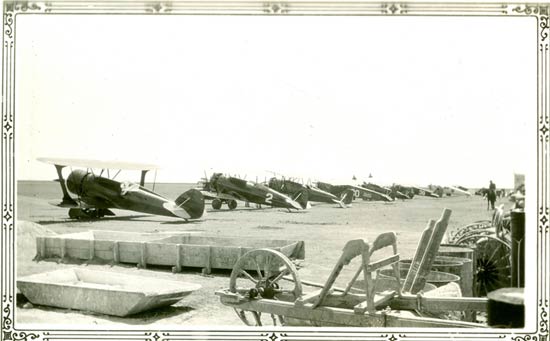 |
What an interesting juxtaposition of technologies in this image, as well as superb foreground interest and old-time snapshot framing printed right on the image. This is an excellent photograph from both the aviation historical and the aesthetic perspective.
The second airplane from the left, race number 2, is the Pitcairn NC96W flown by Margery Doig. The third airplane from the left is the American Eagle named "Miss Chicago" flown by Jean LaRene during the race. The lettering on the fuselage is clearly visible on the original image, as is the registration number for 21M. Please follow the links for more about Margery Doig and Jean and ther airplanes.
August 26, 2016 Photos below courtesy of Tim Kalina via Web. Probably during the 1930 NAR. Note the flagman in the left background.
Waco NC21M, Ca. 1930 (Source: Kalina)
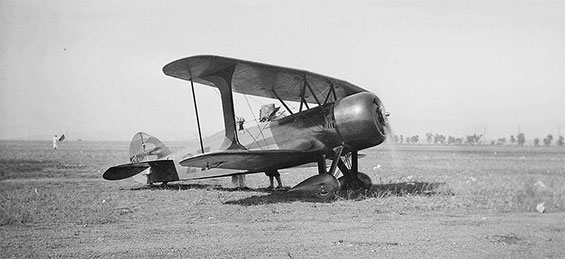 |
Below is an enlargement of the image above. Note the parachute above the cockpit, suggesting the pilot was donning it for departure. The feet, legs and shoes of the person at right, visible under the fuselage, look like O'Donnell's. Note the interwing I strut and the speed farings on the wheels as discussed above.
Waco NC21M, Ca. 1930 (Source: Kalina)
 |
---o0o---
UPLOADED: 10/07/07 REVISED: 12/12/07, 09/30/09, 08/26/16, 06/11/23
|

